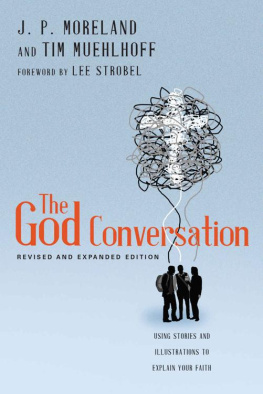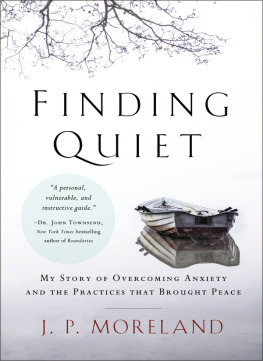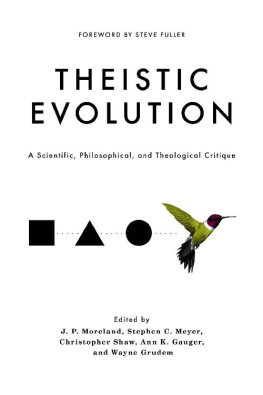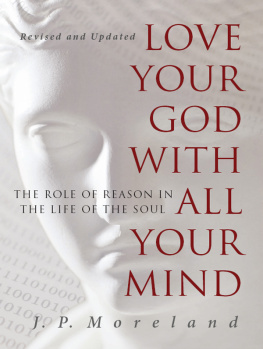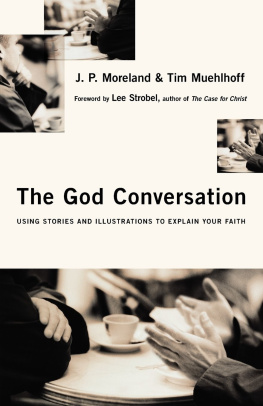Foreword
Lee Strobel, author of The Case for the Real Jesus
More than a decade ago, I invited one of the authors of this book, J. P. Moreland, to Willow Creek Community Church to give a talk on science and faith. At the end of his presentation, a spiritual skeptic challenged him by saying that miracles overturn the laws of nature and therefore are impossible.
Actually, said Moreland, the laws of nature are the way we describe how the world usually works. If someone drops an apple, it falls to the floor. Thats gravity. However, if someone were to drop an apple and I were to reach over and grab it before it hit the ground, I wouldnt be overturning the law of gravity. I would simply be intervening. In a similar way, God is able to reach into the world that he created by performing a miracle. He isnt contravening or overturning the laws of nature; hes simply intervening.
Moreland said a lot of brilliant things that evening. I recall being impressed with his entire presentation. But all these years later, his simple illustration of the falling apple is what I remember most clearly. Thats what good illustrations do: they bring abstract concepts to life, heighten our interest, and stick in our minds for long periods.
When I became a teaching pastor at Willow Creek, the power of good illustrations quickly became evident to me. As I recited dry data in my sermons, people sat back in their seats. When I launched into an extended explanation of an issue, they seemed to relax. But when I used a colorful example, a compelling story, or an illuminating anecdote, they would sit up, move to the edge of their seats, and lean forward. Their body language said it all: illustrations captivate people. No wonder Jesus told so many parables!
Moreland and his coauthor, Tim Muehlhoff, have done us a tremendous service by compiling this fascinating and practical volume. Theyve drawn upon a lifetime of experience to offer illustrations on a wide range of topics, from the problem of evil to world religions to the resurrection to ethics to the existence of God.
The God Conversation brims with creative material for your spiritual discussions with friends, neighbors, colleagues, and family members. Youll find it to be an invaluable resource as you effectively communicate Christianity in ways that others can grasp. As the late evangelist Paul Little used to say, this is putting the cookies on the bottom shelfthat is, making complex and controversial topics accessible through easy-to-remember nuggets of insight and wisdom.
Heres my prediction: when you finish reading The God Conversation, youre going to feel better equipped and more motivated to reach out to others with the message of Christ. Youll quickly see for yourself how much God can use illustrations to open minds and warm hearts to the gospel.
Oh, and before you start reading, grab a yellow highlighter. Youre going to need it!
Preface to the Expanded Edition
Despite all of our differences, Americans are remarkably similar. In record numbers we tune in Sunday nights to watch cable televisions highest-rated show, The Walking Dead, to see how humans negotiate a zombie apocalypse. We pack theaters and make Star Wars: The Force Awakens the quickest film in cinema history to make a billion dollars. The Affluenza Defense, which allowed a juvenile convicted of vehicular manslaughter to serve no jail time because his rich parents spoiled him, continues to spark national outrage. And images of forty-nine slain individuals at a gay nightclub in Orlando break our collective hearts.
These cultural references dominate social media and water-cooler conversations. They also help us fulfill Peters command to give a reason for why we hold to a Christian worldview (1 Pet 3:15). The topics that fill our conversations also open the door to talk about apologetic themes. For example, questions surfaced through characters in TheWalking Dead help us explore morality. In the absence of organized religion or a justice system, do humans now dictate what is right or wrong? Or is there an objective moral law that would even survive a zombie apocalypse? Could the Jedi mind trick be used by God to stop evil? A would-be mugger approaches an unsuspecting couple; does God simply do a mind trick by swiping his fingers and saying, Move on! to the mugger? If so, what could be drawbacks to such divine intervention?
Using films, books, television shows, social media, history, and current events to explain and illustrate our faith was the genesis of the first edition of The God Conversation. It resonated with Christian communicators who wanted to use pop culture as a conversational starting pointso much so that InterVarsity Press now releases this tenth-anniversary revised and expanded edition. Youll find new and timely illustrations sprinkled throughout the book and two new chapters exploring what we think is unique and compelling evidence for God: the argument from desire. This argument suggests that some of our deepest desireslove, acceptance, self-worthreally point us to God.
When asked why she chose to write a novel about the horrors of slavery, Harriet Beecher Stowe responded to her editor, My vocation is simply that of a painter.... There is no arguing with pictures, and everybody is impressed by them whether they mean to be or not. As Christian communicators, our goal is to paint a robust picture of our faith through vivid and memorable illustrations and stories. While your non-Christian friends, coworkers, or neighbors may not always agree with your perspective, theres no denying that the illustrations you share will make a lasting impression that the Holy Spirit can use long after the conversation is over.
May God bless your illustrative paintings.
Introduction
It finally happened. For weeks you prayed for the chance to talk to your coworker about God, and then a door unexpectedly opened. Over lunch, amid talk about work and sports, you had it: the God conversation. For thirty minutes you discussed God and how he fits in your life. Your friend asked a few questions but spent most of the time listening.
Now the conversation is over.
Back at your workstation, you are flooded with questions: What did he think about what I said? Did I make sense? Will he avoid me next time we meet in the cafeteria? What did my friend take away from the conversation?
The answer to this last question is not encouraging. Research in communication says that when people leave a conversation, they immediately forget half of what was said. Half! And worse than that, eight hours later, they remember only about 20 percent of what was discussed.
What makes up the part they do remember? Examples.
The illustrations, stories, and quotes you sprinkled throughout your conversation stay with your friend long after the conversation ends. According to communication experts, the most important part of any conversation is when you say, Think of it this way... or For example... Illustrations are like calling cards salespeople leave with you after the sales pitch. The calling card serves as a reminder of the case they made. Every time you come across that salespersons card, you are reminded of what he or she said. Similarly, every time your friend thinks of the illustrations you used to explain your faith, he or she remembers the point you were making.

